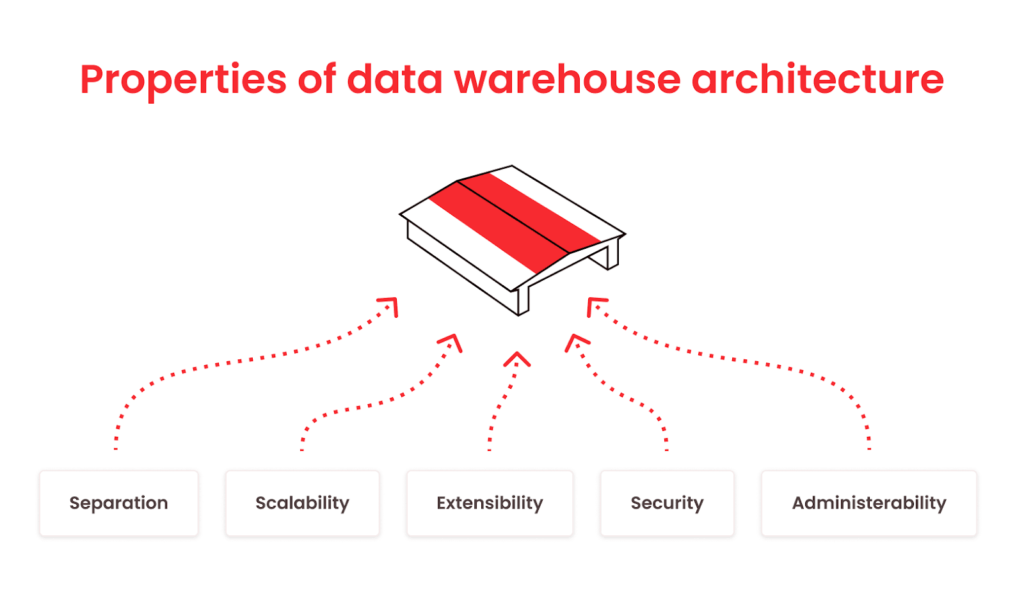Highlights
-Cloud data warehouse is used to analyze and report structured and semi-structured data from multiple sources.
– Multiple factors make the cloud data warehouse a better choice.
– 6 key features of cloud data warehouse
– Three tiers of data warehouse architecture for its overall functionality
– Data Warehouse Migration is done by building a data strategy.
– Evaluate how solutions work and understand existing use cases to select the best cloud-based data warehouse solution.
Since the advent of computers, data processing has become quite easy. However, the enormous data which is gathered is hard to store, tackle, and manage. This is where cloud computing data warehouses come into the picture for data management and storage.
In this article, we briefly cover all about this particular cloud technology. You will learn the essence of what it is and how they are better than on-premise data warehouses.
What is a Cloud Data Warehouse?
The cloud data warehouse is a way to store and manage large amounts of data in a plain cloud. It basically analyzes and reports the structured and semi-structured data from multiple sources. Such include but are not limited to marketing automation, customer relationship management, point-of-sale transactions, etc.
It typically includes an analytical database with its own components and procedures. They can support Ad-hoc analysis (data analysis curated and created by users). Moreover, they are helpful with data pipelines, queries, and business applications. They allow a long-range view of data over time.
Cloud vs. On-premises Data Warehouse
With advancements in technology, the analytical needs of businesses are growing with each passing day. On-premises data warehouses can’t tackle such needs, that’s where cloud-based data warehouses come to save the day. Just as cloud computing successfully manages the data, cloud data warehouses successfully archive data.
In fact, the cloud-based data warehouse market is expected to reach 3.5 billion dollars by next year.
Thus on-premises data warehouses lack the speed, agility, flexibility, and scalability businesses demand today. Some of the basic differences among these two data warehouses are:
Deployment
- On-premise data warehouse: Data is deployed on physical servers on-site.
- Cloud data warehouse: Data is deployed on virtual servers online.
Scalability
- On-premise data warehouse: Requires upfront hardware investment, thus limited scalability.
- Cloud data warehouse: Scalable with on-demand resource adjustment.
Maintenance
- On-premise data warehouse: Need in-house IT management for issues and troubleshooting.
- Cloud data warehouse: Low maintenance burden.
Cost
- On-premise data warehouse: Requires capital expenditure for hardware and infrastructure costs.
- Cloud data warehouse: Requires operational expenditure. Based on the pay-as-you-go pricing model.
Integration
- On-premise data warehouse: Not flexible, fixed capacity, unable to adapt to changes.
- Cloud data warehouse: Smooth integration with other cloud services.
Accessibility
- On-premise data warehouse: Limited accessibility to a certain physical location.
- Cloud data warehouse: Accessible from anywhere through the internet.
Deployment speed
- On-premise data warehouse: Takes time to set up and configure.
- Cloud data warehouse: Quick deployment with readily available resources.
Updates and upgrades
- On-premise data warehouse: Manual upgradation causes increased downtime.
- Cloud data warehouse: Automatic upgradation causes minimal downtime.
Disaster recovery
- On-premise data warehouse: Rely on on-premise backup and recovery solutions.
- Cloud data warehouse: Built-in disaster recovery option.
Distinctive Features of Cloud Data Warehouse
A variety of cloud-data warehouses are available in the market with their own features. However, some of the features that are common and stand out are:
- Flexible storage and compute
Almost all cloud data warehouses provide the feature of storing a large amount of data and the flexibility to access it anywhere. It’s a great feature for businesses that want to manage and utilize the data at multiple locations.
As the world has turned into a global village the idea of on-premise data is just out of the question. Businesses need something that they can readily access whenever and wherever they want.
- Data management and integration
Among the top-tier cloud data warehouses, some offer extensive data integration capabilities. This allows a seamless connection with a variety of data sources. Moreover, they also offer tools that help in managing the data. With these tools, you can create and manage datasets, run queries, and do many more things.
- Data storage
A great thing about cloud-based data storage is that it offers scalable storage solutions. you don’t have any storage limit. you can easily store as much data as you need. Also, if you are worried about the size of your data, you can compress it. This will help you save the space and improve the speed and performance
- Database performance
Cloud data warehouses have features like columnar storage and in-memory caching that optimize them for the highest performance possible. Moreover, with features like parallel query processing the speed and performance are better than ever.
- Database management
With a cloud data warehouse, you get an extensive range of tools for efficient management. It includes the ability to create and manage databases, run queries, and set permissions. Moreover, unlike conventional on-site data warehouses, they offer automatic backups and disaster recovery that keep your data safe.
What is Data Warehouse Architecture?

Cloud data warehouse architecture ensures effective data processing, storage, integration, and retrieval. It ensures this through the structural design and arrangement of components. It consists of a few essential elements:
- Data sources
A variety of sources, such as transactional databases, streaming data, and external APIs, can provide structured, semi-structured, and unstructured data.
- Data ingestion layer
The data ingestion Layer is in charge of gathering and importing data through ETL procedures; certain systems provide real-time data input for quick processing.
- Storage layer
To optimize for scalability and analytical analysis, this layer organizes and stores data in a structured fashion. It frequently uses distributed file systems and columnar storage.
- Compute layer
Manages memory and CPU allocation, processing queries, and dynamically modifies resources in response to workload demands.
- Query optimization and execution
The process of optimizing SQL queries involves the use of effective execution plans and methods. The optimal execution plan is often chosen through the application of cost-based optimization.
- Integration with BI tools
Provides multidimensional analysis in BI tools with OLAP capabilities and support for connectivity via JDBC, ODBC, and RESTful APIs.
Data Strategy for Data Warehouse Migration
- Establish objectives and a plan for the modernization of the data warehouse.
- Secondly, assess the benefits of a cloud data warehouse in terms of speed, efficiency, capacity, and cost savings.
- Use a corporate data catalog to understand present data.
Select the migration method
- Possibilities include lift and shift, incremental migration, and new construction.
- For speedy value, incremental migration is common.
Select technology platform
- Decide between provider-managed (PaaS) and self-managed (IaaS).
- Employ flexible tools that work with both on-premises and cloud environments.
Migrate and operationalize
- Establish test standards, organize and carry out the migration, and finally put the cloud data warehouse into operation.
Final Say: How to Choose the Right Cloud Data Warehouse Solution
Cloud data warehousing systems mostly use a pay-as-you-go price model. It is perfect for startups and enterprises anticipating new platforms and data sources. The cloud data warehouse can grow swiftly with this strategy to accommodate changing demands. Moreover, cloud data warehouse systems might be implemented differently, even though they often provide comparable advantages. Thus, to match each solution to their own needs and preferences, organizations should carefully consider each special qualities and advantages. This is where you can utilize our database consulting expertise.






